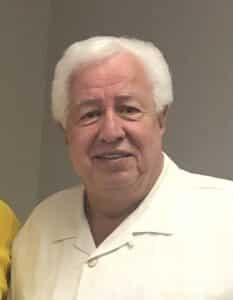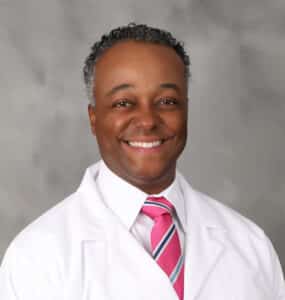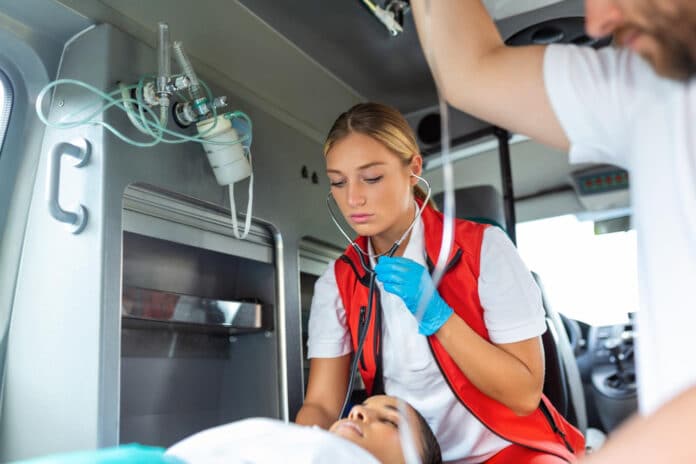“I was watching the Buffalo Bills game on tv and saw Damar Hamlin collapse on the football field,” said Roderick Bennett, MD. “He fell to the ground following a tackle with another player, and it was apparent he was suffering a serious medical condition.”
Bennett was referring to Buffalo Bills player Damar Hamlin, 24, who is still in critical condition following a sudden cardiac arrest during a recent NFL game against the Cincinnati Bengals. A board-certified emergency medicine physician, Dr. Bennett has significant experience in the medical field. He is the emergency room director with Bravera Health in Brooksville, as well as the medical director of Citrus County Fire Rescue.
Cardiac arrest results from electrical disturbances that cause the heart to suddenly stop beating properly, and death can be quick if help isn’t rendered immediately,” said Bennett. “It is not the same as a heart attack or heart failure.”
“Sudden cardiac arrest is a leading cause of death in the U.S. and requires immediate medical attention such as CPR and a shock to the heart using a defibrillator,” he explained. “Every second counts when sudden cardiac arrest occurs, and it’s critical to know what to do in an emergency.”
“If sudden cardiac arrest occurs in young athletes, it could be because of genetic arrhythmias, problems with the structure of the heart or coronary arteries, heart inflammation, and sometimes substance use,” said Bennett. In older people, the main risk factors are coronary artery disease and other heart conditions.”
Family history is another component of the overall risk of developing heart disease. Lifestyle also plays an important role. If you’re diabetic, overweight, smoke, have a nutrient-poor diet, or don’t exercise, these lifestyle factors will negatively impact your health in the long term.
“In the case of Mr. Hamlin, it is an absolute testament that early bystander CPR saved his life,” said Bennett. “Receiving immediate CPR is one of the biggest deciding factors on who can survive a cardiac arrest, and this is why the American Heart Association focuses on training as many people as possible in CPR techniques,” he said.
Former Hernando County Fire Commissioner Bob Kanner is a sudden cardiac arrest survivor and can attest to the prompt attention of first responders giving him life-saving CPR while transporting him to the hospital. “My wife, Angela, called 911 immediately, and an ambulance and fire engine arrived within 4 minutes,” said Kanner emotionally. “Thanks to the first responders and healthcare professionals in the ER, I was brought back to life.”
Kanner stated, “Never in a million years did I believe this would happen to me. In a split second, my entire life changed.” Since his cardiac arrest, Kanner has changed his lifestyle dramatically. He is now committed to a healthy diet, exercising as much as possible, and visiting his cardiologist regularly. “It is so very important to watch your diet because the wrong foods can kill you,” he said. “It almost killed me.”
Kanner knows too well the importance of bystander CPR. He has been teaching CPR/AED in Hernando County for more than 32 years.
“I am a CPR instructor for the American Heart Association, the American Health and Safety Institute, and an EMT,” he said. “Now more than ever, my goal is to teach as many people as possible how to use CPR to save people’s lives. The worse thing you can do when someone is in cardiac arrest is to DO NOTHING. Anything you can do is better than doing nothing.”
Dr. Bennett added, “Hernando and Citrus counties have a very robust 911 system, and first responders can be on scene very quickly,” he said. “The average response time is 7 minutes, and our highly trained paramedics use the same drugs and sophisticated defibrillation devices as in the ER to save lives,” he said.
Once the patient arrives in the emergency room, he or she will have received the very best care possible. The goal of the paramedics on the scene and the healthcare professionals in the ER is to achieve ROSC — Return of Spontaneous Circulation and to preserve brain function.
“ROSC can include moving, coughing, or breathing, along with signs of a palpable pulse or a measurable blood pressure,” said Bennett. “When the patient is stabilized, we look for the underlying cause of the cardiac arrest and give that patient the very best chance to return to normal life.”
Editor’s Note: Damar Hamlin is expected to remain under intensive care as his condition continues to show improvement.

Photo by SUE QUIGLEY.


